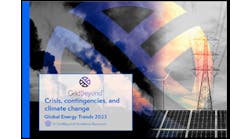US Sen. Markey Says Outdated Medicare/Medicaid Rules Block Hospital Microgrids, Urges Change
According to US Sen. Edward Markey, D-Mass., outdated Medicare and Medicaid regulations are forcing hospitals to continue using fossil fuel backup generators instead of cleaner microgrids.
The problem rests with electrical code rules, dating back to 2011, that require health care buildings to install fossil fuel generators on-site, according to a Dec. 16 letter that Markey sent to US Health and Human Services Secretary Xavier Becerra.
The Centers for Medicare & Medicaid Services, the agency charged with the federal health care programs, continues to make hospitals comply with the 2011 code even though the National Fire Protection Association has instituted newer standards to permit the use of microgrids and other clean energy systems instead, Markey said.
He urged Becerra to issue a waiver that would allow hospitals to adopt the newer electrical standard, known as the 2023 National Electrical Code which embraces microgrids.
“Microgrids — which are ‘localized grids that can disconnect from the traditional grid to operate autonomously’ — can use any energy source, including solar or other clean energy sources, which are safer, more resilient, and can be more reliable than fossil-fueled generators,” Markey said in the letter.
Markey cited as an example the microgrid at the Kaiser Permanente Richmond Medical Center in California.
Under the older standards, hospitals that install microgrids and clean energy must still keep diesel generators on-site and regularly test them, which discharges air pollutants, he said.
While the Richmond Medical Center still has diesel backup on-site, it has demonstrated that the hospital can reduce its use — and energy costs — with a solar and storage microgrid.
Chance for hospitals to secure IRA funding
Issuing the waiver is particularly important now, Markey said, because the Inflation Reduction Act, passed by Congress this year, provides tax credits for microgrids and for the clean energy technologies that often operate within microgrids, including solar, batteries and energy storage.
“Many health facilities operate as nonprofit entities and are eligible to receive direct payments for this tax credit, helping to offset the upfront investments in clean energy infrastructure,” Markey said. “Bonus credits for clean energy microgrids located on tribal lands and in low-income communities will further invest in and bolster the resilience of frontline communities facing the climate crisis.”
Relying on “the current 2023 NEC instead of the outdated 2011 version would immediately open up the clean energy opportunities in the Inflation Reduction Act to health care facilities and benefit patient safety and health,” said Markey, a progressive who has pushed for climate solutions for several years.
Climate change hits hospitals hard
Markey warned that health care is likely to “feel the weight” as climate change worsens, “whether through disaster response, treating the health consequences of trauma or a rise in climate-related health conditions.”
He said that over the past decade 90% of US counties have experienced extreme weather disasters, causing $1.1 trillion in damages.
“In order to protect our health and respond to our climate crisis, we must support the adaptation of our health system to the realities of climate change. Moving our health care facilities away from reliance on fossil fuels is an important step in that process,” Markey said.
Read more about hospital microgrids here on Microgrid Knowledge.








